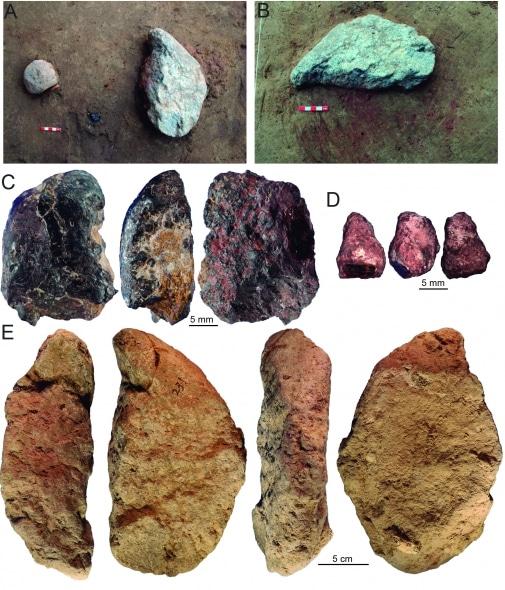An international team of archaeologists has excavated the well-preserved prehistoric site of Xiamabei in northern China. Numerous stone tools, fossils, ocher and red pigments have been found there, indicating the existence of an innovative culture of about 40,000 years, writes Phys.org. The study was published in the journal Nature. Archaeological excavations have been carried out in the Nihevan River basin. It was there that scientists identified traces of “innovative behavior and unique tools.”
This human culture was not previously known to science. Most striking is its age – it is about 40 thousand years. Incidentally, other recent studies suggest that the first members of the species Homo sapiens may have arrived in North Asia about 40,000 years ago. Until now, however, nothing has been known about the life or cultural adaptation of these ancient peoples, nor about their possible interaction with archaic human groups. The findings of the Xiamabei site shed new light on the history of Asian settlement. In addition, scholars note that Xiamabei differs from any other well-known archeological site in China in that it has a fundamentally new set of cultural features. For example, the earliest known evidence of ocher cultivation in East Asia has been found here. A unique set of various stone tools has been excavated here that have not been found anywhere else in China. Finds like these point to cultural innovation. “The ability of hominins to live in the northern latitudes, with cold and highly seasonal conditions, is probably due to the evolution of culture in the form of economic, social and symbolic adaptations,” said Dr. Shixia Yang, a researcher at the Chinese Academy of Sciences. “The Xiamabei finds help us understand these adaptations and their potential role in human migration.” One of the important cultural features, scientists point to artifacts that indicate the widespread use of ocher. The analysis showed that different species of this natural mineral were brought to Xiamabei from other regions and treated by crushing and abrasion. In other words, the ancients made powders, which they then used to paint various objects, including the walls and floors of their homes. This was a real production process – an unprecedented phenomenon for this period.
Stone tools are also a fundamentally new cultural adaptation. The fact is that most of these tools have been minimized. More than half of the cannons found are less than 20 millimeters in size. There are clear signs that these tools had handles. They have been used for drilling, scraping skins, planing plant material and cutting soft animal tissues. This means that the inhabitants of the ancient settlement made multifunctional tools equipped with handles, which is an innovative technology for those times. A study of the dwellings of the ancients also shows that this society had a complex social system. Unfortunately, the remains of people at the Xiamabei site have not yet been found. This would shed light on the species of the ancient inhabitants of these places. But according to circumstantial evidence, scientists have established that Homo sapiens were the inhabitants of Xiamabei.
Photo: Ocher parts and equipment for processing stone and red pigment. Fa-Gang Wang, Francesco d’Errico / Wang et al. Nature









